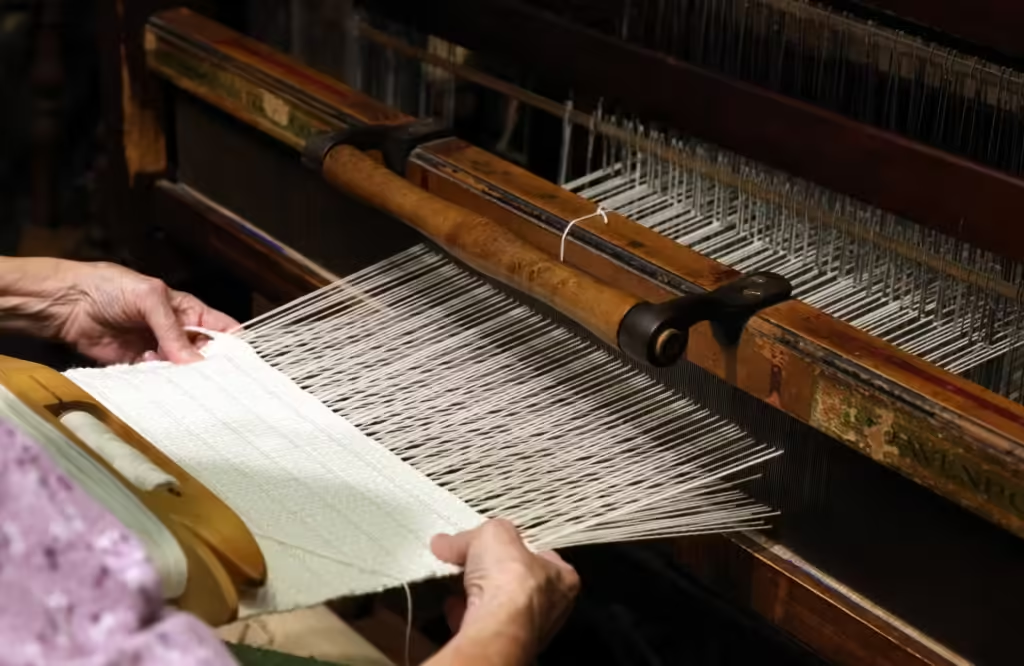Shawls have long been a symbol of elegance, warmth, and cultural heritage across various regions of the world. In Pakistan, shawls hold a special place in our hearts, not just as a fashion accessory but as an art form that has been passed down through generations. The intricate craftsmanship behind handwoven shawls is a testament to the skill, dedication, and artistry of the artisans who create them. In this post, we’ll take you on a journey through the intricate process of hand-weaving shawls, exploring the materials, techniques, and the passion that goes into creating each unique piece.
The Art of Weaving: A Tradition Passed Down Through Generations

Handwoven shawls are much more than mere fabric; they embody a blend of tradition, history, and artistry. In many regions of Pakistan, such as Kashmir, Swat, and Hunza, the art of weaving is passed down through generations. Families of artisans have practiced this craft for centuries, using techniques that remain largely unchanged from those of their ancestors. Each shawl thus serves as a tangible link to the past.
Weavers often begin learning the craft at a young age, working alongside their elders to master the intricate techniques required to create high-quality shawls. They hone their skills over years of practice, with each artisan adding their personal touch to the designs, making every shawl unique.
Selecting the Right Materials: The Foundation of Quality
The craftsmanship of a shawl begins with selecting the right materials, as the quality of the fiber is crucial to the final product. In Pakistan, some of the most sought-after shawls are made from materials such as:

- Pashmina Wool: Pashmina is highly prized for its softness and insulating properties. It comes from Cashmere goats that inhabit the high-altitude regions of Pakistan.

- Cashmere: Like Pashmina, Cashmere stands out for its softness and insulating properties. Sourced from Cashmere goats in the high-altitude regions of Pakistan, this luxurious fiber is highly valued for its quality.

- Silk: Silk shawls shine with a renowned sheen and offer a lightweight, luxurious feel. People frequently choose these shawls for formal occasions because their elegant and refined appearance enhances sophisticated attire. The smooth texture and delicate drape of silk add an extra layer of grace to any outfit.

- Cotton and Wool Blends: For more everyday wear, shawls made from a blend of cotton and wool offer durability and comfort.
Artisans carefully clean, card, and spin the raw fibers into threads. This process demands precision and patience, as the thread’s quality directly affects the shawl’s texture and strength.
The Weaving Process: Where Art Meets Precision
Once the materials are prepared, artisans begin the weaving process, showcasing their true artistry. Hand-weaving a shawl can take several days to a few weeks, depending on the design’s complexity and the shawl’s size.

- Setting up the Loom: The first step in the weaving process is setting up the loom. The loom is an essential tool in the weaving process, as it holds the warp threads in place while the weaver passes the weft threads through them. Setting up the loom is a meticulous process that requires the weaver to carefully measure and align the threads.

- Weaving the Fabric: With the loom set up, the weaver begins the intricate process of weaving the threads together. Weavers interlace the warp and weft threads in specific patterns, using their hands to create intricate designs. They move their hands with skill and rhythm, applying traditional techniques that have been handed down through generations. This meticulous process ensures each shawl reflects both the weaver’s expertise and cultural heritage.Each pattern tells a story, with motifs that may represent elements of nature, cultural symbols, or even personal experiences of the weaver.

- Creating Patterns and Designs: One of the most captivating aspects of handwoven shawls is the intricate patterns and designs. These are not just decorative elements but are deeply rooted in cultural significance. In regions like Kashmir, for example, the “paisley” design is iconic and symbolizes fertility and life. Artisans use various techniques to create these patterns, such as tapestry weaving, kani weaving, or embroidering the designs post-weaving. Each technique requires a high level of skill and precision.
Dyeing the Shawls: A Splash of Color

The dyeing process is an art in itself. Artisans carefully soak the fibers in dye and closely monitor the process to ensure the color remains even and vibrant. For shawls with multiple colors, they may dip different sections into separate dye baths or use resist-dyeing techniques like ikat to create intricate patterns.
Finishing Touches: Perfecting the Masterpiece
After weaving and dyeing, the shawl undergoes a finishing process to enhance its texture and appearance.This may include:
- Washing and Stretching: Artisans wash the shawl to remove any impurities and soften the fibers. They then carefully stretch it while it is still damp to ensure it retains its intended shape and dimensions. This process helps maintain the shawl’s form and enhances its overall appearance and feel.
- Trimming and Hemming: Artisans trim and hem the edges of the shawl to prevent fraying. Depending on the shawl’s style, they may complete this process by hand or use a sewing machine.
- Embellishments: Some shawls feature additional embellishments like embroidery, beadwork, or fringe. These details add to the shawl’s uniqueness and value.
The Value of Handwoven Shawls: A Labor of Love

The final product is a beautiful, high-quality shawl that reflects the time, effort, and skill of the artisans who created it. Each handwoven shawl is a labor of love, with every thread carefully placed to create a work of art that is both functional and beautiful.
The value of a handwoven shawl goes beyond its material cost. Explore cultural heritage and understand the artisans’ craftsmanship that make these pieces special. It also reflects an appreciation for the slow fashion process, highlighting the unique and deliberate process of creating something truly unique.
